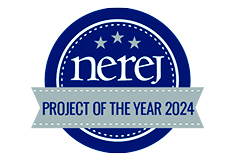News: Spotlights
Posted: November 6, 2008
Cambridge Energy Alliance
In March 2007, the city of Cambridge was chosen by the Henry P. Kendall Foundation to be the model city for their new initiative in energy efficiency and water conservation, called the Cambridge Energy Alliance. The Cambridge community has the opportunity to become the first city in the country to adopt energy efficient measures.
The target goal for the community is to cut electrical demand by 15% at the peak hours, cut the annual water and electricity consumption by 10%, and cut the greenhouse gas emissions by 10% annually by 2011. This city sponsored non-profit group will provide $100 million in low interest loans over the next 5 years to property owners and tenants for energy efficiency and renewable energy measures in existing buildings.
Back in the late 1990s Cambridge had the vision of the Energy Alliance. They set goals of reducing the carbon footprint left by Cambridge businesses and residents. Although progressive with their ideas and programs, over the following years they actually saw an increase of energy consumption. They learned that they were not focusing on the major problem which they thought were cars and trucks rolling down the streets of Cambridge. It turns out that 80% of greenhouse gases in major cities such as Cambridge are caused by the buildings that we live and work in everyday.
That's when they decided to reach out to the Boston based Kendall Foundation. The Kendall Foundation is a place that develops "new strategies" to reduce greenhouse gasses. Their senior vice president Rob Pratt is one of the foremost leaders of energy conservation in the world. He has extensive experience over his 30 years involved with energy conservation. He explained to the city officials that the best strategy they could implement would be to simply stop wasting energy, and the Cambridge Energy Alliance was started.
This is basically the way it works. The business or homeowner will have an expert come in to inspect every aspect of the home or business. The expert evaluates their findings and return to the homeowner with ways they can save between 15-30% on water, electricity, heating and cooling. They then take it a step further and offer to provide you with a loan to pay for the upgrades showing you the savings over that loans time period on what you would be paying with current appliances.
The program got off to a great start when both Harvard and MIT enrolled. Combined they are the largest employers to the city with nearly 18,000 full time staff. They also enroll a combined 28,400 students within the city. It was such a big help to sign on Harvard and MIT, seeing that as they are the biggest employers to the city, they needed to get involved to pave the way for other businesses and institutions.
It is a major step a single community can do its part to lessen our dependence on foreign oil while addressing the local energy problems. It should also add much needed jobs to the country which will stimulate economic growth. In 2006, there were 8 million energy efficiency jobs nationwide. If a program such as the Cambridge energy Alliance catches on, it could grow to 32 million jobs in about 20 years, one study shows. Governor Deval Patrick said that the Cambridge Energy Alliance is a model for other cities, states, and the nation as a whole.
Tags:
Spotlights
MORE FROM Spotlights
The New England Real Estate Journal presents the First Annual Project of the Year Award! Vote today!
The New England Real Estate proud to showcase the remarkable projects that have graced the cover and center spread of NEREJ this year, all made possible by the collaboration of outstanding project teams. Now, it's time to recognize the top project of 2024, and we need your vote!








